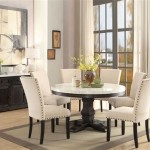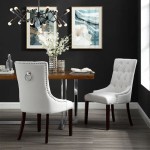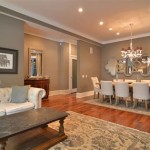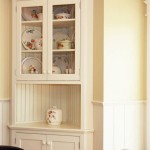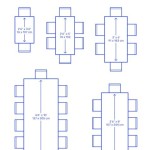Tiffany Style Chandeliers for Dining Rooms: Illuminating Elegance and Craftsmanship
Tiffany style chandeliers represent a distinct and enduring aesthetic within the realm of decorative lighting. Their application in dining rooms offers a unique blend of functionality and artistic expression, transforming a commonplace space into an area of visual interest and sophisticated ambiance. These chandeliers, characterized by their stained-glass construction and intricate designs, have a rich history and continue to be a popular choice for homeowners seeking to add a touch of timeless elegance to their interiors.
The allure of Tiffany style chandeliers lies in their ability to diffuse light through meticulously crafted stained-glass panels. This creates a warm, inviting glow that enhances the dining experience. The variety of colors, patterns, and motifs available ensures that there is a Tiffany style chandelier to complement virtually any dining room décor, from classic and traditional to more contemporary styles. Understanding the characteristics of these fixtures, their historical significance, and the factors influencing their selection is crucial for maximizing their impact in a dining room setting.
Understanding the Origins and Evolution of Tiffany Style Lighting
The term "Tiffany style" refers to lighting fixtures and other decorative objects inspired by the work of Louis Comfort Tiffany and his company, Tiffany Studios, which flourished in the late 19th and early 20th centuries. Tiffany revolutionized the art of stained glass, developing innovative techniques for creating vibrant colors, textures, and intricate designs. While the original Tiffany Studios pieces are highly valuable antiques, numerous manufacturers have since produced reinterpretations of his iconic designs, making Tiffany style lighting accessible to a wider audience.
Louis Comfort Tiffany did not invent stained glass, but he significantly enhanced the process. He used a copper foil technique, where each piece of glass is wrapped in copper foil and then soldered together, allowing for more intricate and complex designs than traditional lead came methods. Furthermore, he developed a range of iridescent and textured glass, adding depth and visual interest to his creations. These innovations allowed for the creation of lamps and chandeliers that were not merely functional light sources but also works of art.
The designs of Tiffany style chandeliers often feature natural motifs, such as flowers, leaves, and insects. These elements are rendered in a variety of colors, from rich jewel tones to softer, more muted hues. The choice of colors and patterns can significantly impact the overall ambiance of a room. For example, a chandelier with warm earth tones and floral patterns can create a cozy and inviting atmosphere, while one with cooler colors and geometric designs might lend a more contemporary feel.
Key Considerations When Selecting a Tiffany Style Chandelier for a Dining Room
Choosing the right Tiffany style chandelier for a dining room requires careful consideration of several factors, including the size of the room, the height of the ceiling, the existing décor, and the desired level of illumination. A chandelier that is too large or too small can look out of place and detract from the overall aesthetic of the room. Similarly, the style and color palette of the chandelier should complement the existing furniture, wall color, and other decorative elements.
Size and Scale:
The size of the chandelier should be proportional to the size of the dining room. As a general rule, the diameter of the chandelier should be approximately half the width of the dining table. For example, if the dining table is 6 feet wide, the chandelier should be around 3 feet in diameter. The height of the ceiling is also an important consideration. For standard 8-foot ceilings, the bottom of the chandelier should hang approximately 30 to 36 inches above the table. For higher ceilings, the chandelier can be hung lower.Style and Design:
Tiffany style chandeliers are available in a wide range of styles and designs, from traditional floral motifs to more contemporary geometric patterns. The style of the chandelier should complement the overall décor of the dining room. For a traditional dining room, a chandelier with a classic floral design and warm colors might be a good choice. For a more modern dining room, a chandelier with a geometric pattern and cooler colors might be more appropriate. It is essential to consider the existing furniture, wall color, and other decorative elements when selecting the style of the chandelier.Light Output and Illumination:
The primary function of a chandelier is to provide light. The amount of light needed will depend on the size of the dining room and the intended use of the space. A larger dining room will require a chandelier with more light output than a smaller dining room. Additionally, if the dining room is used for tasks such as reading or working, brighter illumination may be necessary. Tiffany style chandeliers typically use incandescent or LED bulbs. LED bulbs are more energy-efficient and last longer than incandescent bulbs, but they may not provide the same warm, inviting glow. The choice of bulbs will depend on personal preference and the desired level of illumination.Maintaining and Caring for Tiffany Style Chandeliers
Proper maintenance and care are essential for preserving the beauty and longevity of a Tiffany style chandelier. Regular cleaning will prevent dust and grime from accumulating on the stained-glass panels, which can dull their colors and reduce their brilliance. Gentle cleaning methods are recommended to avoid damaging the delicate glass and soldered joints. Furthermore, inspecting the chandelier regularly for loose or damaged components can prevent more serious problems from developing.
Cleaning:
The best way to clean a Tiffany style chandelier is to use a soft, dry cloth to gently dust the glass panels. For more stubborn dirt or grime, a slightly damp cloth can be used. Avoid using harsh chemicals or abrasive cleaners, as these can damage the glass and metal components. It is also important to avoid spraying cleaning solutions directly onto the chandelier, as this can cause damage to the electrical components.Inspection:
Regular inspections can help identify potential problems before they become serious. Check the chandelier for loose or damaged glass panels, worn or frayed wires, and loose screws or other hardware. If any problems are detected, they should be addressed promptly by a qualified electrician or lighting professional. Ignoring minor problems can lead to more costly repairs down the road.Light Bulb Maintenance:
Regularly check the light bulbs in the chandelier and replace them as needed. When replacing bulbs, be sure to use the correct wattage and type specified by the manufacturer. Using the wrong type of bulb can damage the chandelier or create a fire hazard. It's also beneficial to clean the bulb sockets before installing new bulbs to ensure good electrical contact.In conclusion, Tiffany style chandeliers offer a unique and elegant lighting solution for dining rooms. By understanding their history, considering the factors influencing their selection, and implementing proper maintenance practices, homeowners can enjoy the beauty and functionality of these fixtures for many years to come. The timeless appeal of Tiffany style lighting ensures that it will remain a popular choice for those seeking to create a dining space that is both visually stunning and warmly inviting.

Tiffany Chandelier Stained Glass Handmade Shade Ceiling Light Lighting Fixtures Ebay

Orange Sunflower Hanging Light Rustic Style Tiffany Stained Glass Chandelier For Dining Room Clearhalo

Tiffany Style Chandelier Aeyee Blue Stained Glass Ceiling Pendant Light Baroque Lamp Hanging For Dining Room Living 11 Lights

Stained Glass Style Pendant Lamp Fallen Leaves Design Indoor Hanging Fixture Decorative Lighting For Dining Room

Dale Tiffany Th21070 Anacapa Dragonfly Inverted Hanging Fixture Dark Brown

Tiffany Style Ceiling Light Retro Dining Room Chandelier Stained Glass Lamp E26 Ebay

Fine Maker 20 Inch Tiffany Stained Glass Chandelier 5 Light Dining Room

Stratford Broe Pendant Chandelier Lighting 20 3 4 Wide Farmhouse Rustic Art Glass Light Fixture For Dining Room Living House Home Foyer Kitchen

11 13 Lights Dining Room Pendant Chandelier Tiffany Brass Down Lighting With Dome Stained Glass Shade 39 47 Wide Clearhalo

Tiffany Dining Room Lighting Lightsonline Com



